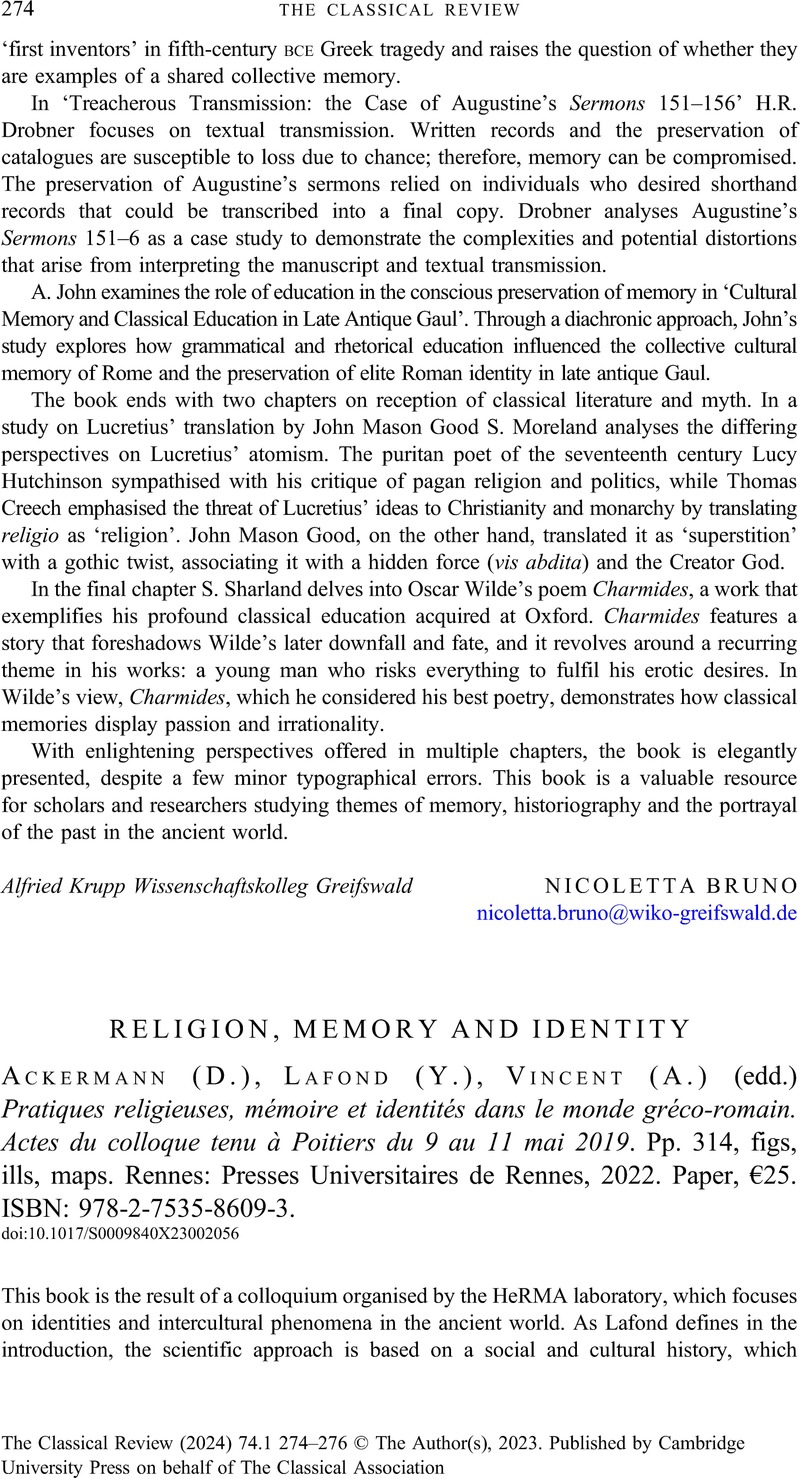No CrossRef data available.
Article contents
RELIGION, MEMORY AND IDENTITY - (D.) Ackermann, (Y.) Lafond, (A.) Vincent (edd.) Pratiques religieuses, mémoire et identités dans le monde gréco-romain. Actes du colloque tenu à Poitiers du 9 au 11 mai 2019. Pp. 314, figs, ills, maps. Rennes: Presses Universitaires de Rennes, 2022. Paper, €25. ISBN: 978-2-7535-8609-3.
Review products
(D.) Ackermann, (Y.) Lafond, (A.) Vincent (edd.) Pratiques religieuses, mémoire et identités dans le monde gréco-romain. Actes du colloque tenu à Poitiers du 9 au 11 mai 2019. Pp. 314, figs, ills, maps. Rennes: Presses Universitaires de Rennes, 2022. Paper, €25. ISBN: 978-2-7535-8609-3.
Published online by Cambridge University Press: 17 November 2023
Abstract
An abstract is not available for this content so a preview has been provided. Please use the Get access link above for information on how to access this content.

Information
- Type
- Reviews
- Information
- Copyright
- Copyright © The Author(s), 2023. Published by Cambridge University Press on behalf of The Classical Association


